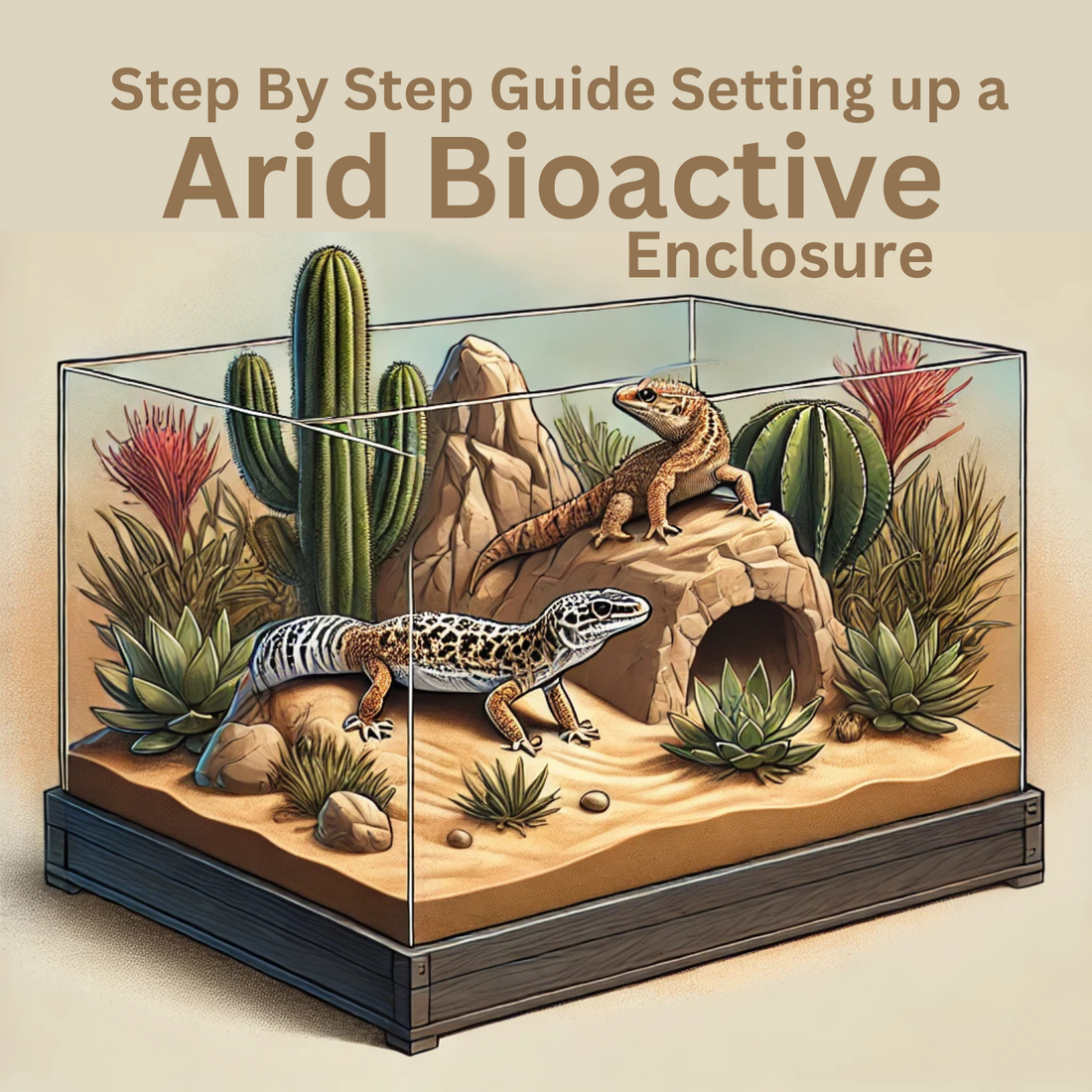
Step-by-Step Guide To A Arid Bioactive Enclosure
Share
An arid bioactive setup is a self-sustaining, naturalistic enclosure designed for desert or dry-climate reptiles and invertebrates. It mimics their natural habitat by incorporating live plants, beneficial microfauna (such as isopods and springtails), and a substrate that supports both burrowing and waste decomposition.
1. Choose the Right Enclosure
• Select a properly sized enclosure based on the species you plan to house.
• Glass enclosures with front-opening doors (like Exo Terra or Zoo Med) work well for reptiles.
• Ensure good ventilation to prevent excessive humidity buildup.
2. Create a Drainage Layer (Optional)
• Unlike tropical setups, a full drainage layer isn’t always necessary, but if you want extra moisture control:
• Use a thin layer of lava rock or Hydroballs / LECA (Lightweight Expanded Clay Aggregate)
• Cover with a layer of fiberglass screento prevent soil from mixing in.
3. Add an Arid Bioactive Substrate
The substrate needs to be nutrient-rich, well-draining, and mimic a desert environment:
• Base Layer:Use a mix of sandy, rocky, and clay-based soil.
Recommended mix:
• 50% play sand(or excavator clay if burrowing species are present)
• 40% topsoil(pesticide-free)
• 10% coconut husk fiber or crushed lava rock(helps with aeration)
• Pack it down to allow burrowing species to dig stable tunnels.
Disclaimer: With any loose substrate, impaction can be a risk. To help reduce this risk, we strongly recommend dish feeding or using tongs when feeding your reptile or amphibian.
4. Introduce Microfauna & Cleanup Crew
• Isopods:Arid-tolerant species like Porcellio laevis, Porcellio dilatatus, or Armadillidium vulgare.
• Springtails:Desert springtails help with mold prevention.
• Buffalo Beetles (Dermestid beetles):Great for consuming leftover organic waste.
• Add leaf litter, cork bark, or dried moss for the microfauna to hide and breed.
5. Add Hardscape & Hides
• Use natural rocks, wood, and botanicalsto create hiding spots and basking areas.
• Good options:
• Cholla wood
• Cork bark
• Slate or flagstone
• Dragon stone or red lava rock
• Secure any heavy rocksby placing them on the glass bottom, not on top of the substrate, to prevent cave-ins.
6. Select Arid Plants
Choose drought-tolerant plants that can thrive in dry conditions. Some great choices:
• Succulents(Haworthia, Gasteria, Aloe)
• Cacti(small, non-toxic species only)
• Agave
• Echeveria
• Desert grasses(Muhlenbergia, Festuca)
• Planting Tips:
• Ensure roots are firmly planted in the substrate.
• Water sparingly to prevent root rot.
• Avoid overwatering; mist lightly only in sections.
7. Set Up Heating & Lighting
• Heat:Use a combination of heat lamps or under-tank heaters, depending on the species’ needs.
• UVB:If housing reptiles, ensure proper UVB lightingfor calcium metabolism.
• Daylight:Use LED or full-spectrum plant bulbsfor plant health.
• Create a temperature gradient:
• Basking area:90–110°F (species dependent)
• Cool side:75–85°F
• Night temps:65–75°F
8. Establish & Monitor the Enclosure
• Let the enclosure run for 2–4 weeksbefore adding animals.
• Monitor temperature, humidity, and soil conditions.
• If humidity is too high, increase ventilation or reduce misting.
9. Introduce the Animal
• Once the bioactive system stabilizes, introduce your reptile or insect.
• Continue spot-cleaning and replenishing microfauna as needed.
10. Long-Term Maintenance
• Spot cleanwaste but let the cleanup crew handle most breakdown.
• Feed the isopodswith extra leaf litter, dried flowers, or fish food occasionally.
• Check humidity levels(should stay low, around 20–40% for most desert species).
• Replace plantsif needed and trim as necessary.
Species That Thrive in Arid Bioactive Setups
• Reptiles:Leopard geckos, bearded dragons, uromastyx, collared lizards, Desert Tortoises, sand boas
• Invertebrates:Desert millipedes, vinegaroons, scorpions, arid tarantulas
Creating an arid bioactive enclosure can be a rewarding way to mimic your animal’s natural environment while supporting healthy behaviors and improving enclosure hygiene. With the right substrate mix, proper maintenance, and responsible feeding practices, you’ll set your reptile or amphibian up for long-term success. Remember, observation and research are key—keep learning, stay curious, and your animals will thrive because of it.
